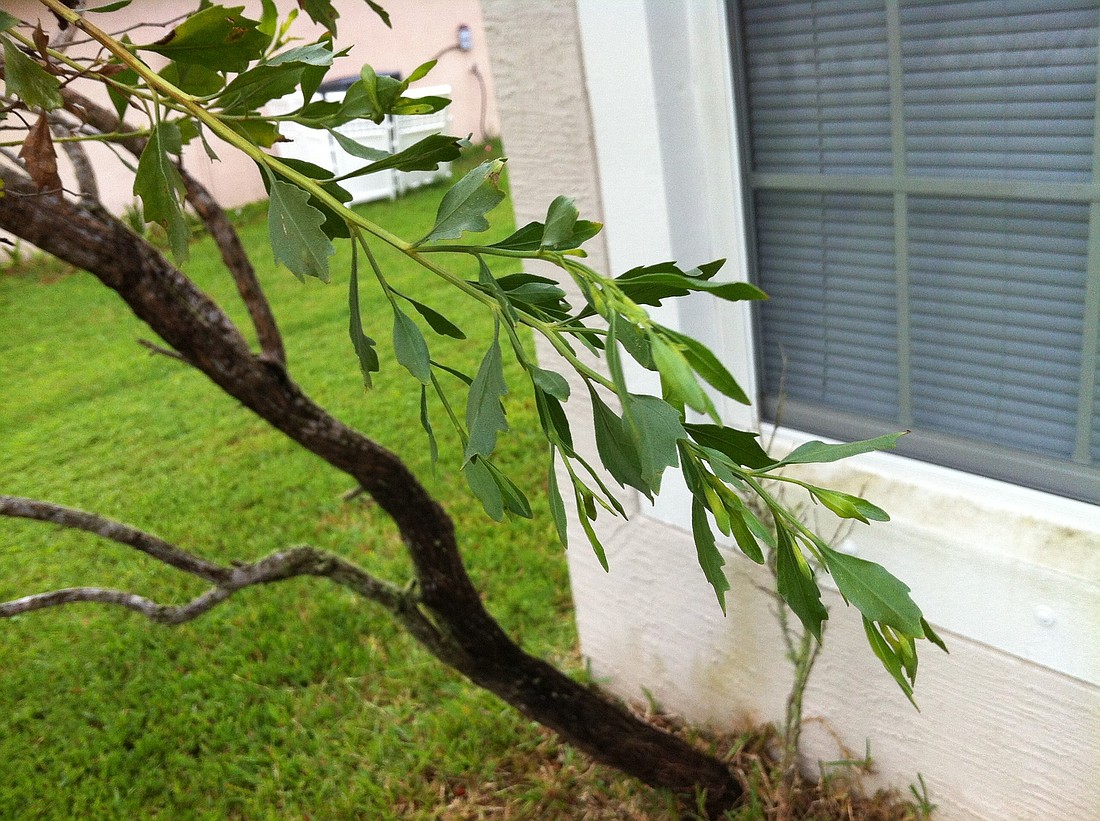- November 23, 2024
-
-
Loading

Loading

Aveo Engineering is great and all, but I, too, have made a contribution that should bring jobs to our fair city!
It all started a few weeks ago when I decided to learn the names of every tree in my yard. It's a natural human impulse dating back to Adam and Eve: I want to tend my own little Garden of Eden in Matanzas Woods.
I thought I could enlist my children to help me with this task, but it turns out they relate more to another primal human impulse, which is to get in as much TV as possible before school starts again.
So, I checked out some books from the library and set out on my adventure. Call me Meriweather Lewis. If I have no William Clark, so be it. The history book will be shorter and more about me.
The first tree was a piece of cake. It's got pink flowers on it and green leaves. The bark is flaky. For the layman, that might not be enough to go on, but I could instantly tell it was a crape myrtle. It says so right on the tag that was left on the tree when it was planted.
Unfortunately, that's the only tree with a tag in my yard. Looks like I will have to rely on "Native Trees of the Southeast: An Identification Guide," which I have out on loan from the library.
It's simple to use, and it reminds me of a choose-your-own adventure book. You just follow the steps, answering yes or no until, by a process of elimination, you arrive at the correct genus and species.
One tree behind my house has me curious, so I dive into the book.
1. Leaves thick, evergreen or tardily deciduous
2. Leaves strongly aromatic, spicy
3. Leaves nearly fleshy; lateral veins indistinct; petioles red
If the answer to all of those questions is yes, you have an illicum floridanum. There’s a picture on page 209 to help you verify, and it’s definitely not that.
I skip ahead a few steps. Maybe something will stand out.
6. Twigs not encircled at nodes with stipular scars, not stout
11. Leaves glabrous beneath; flowers saucer-shaped, with pouches, about 1 inch in diameter
22. Fruit a single drupe, about 1/2 inch in diameter; inner bark and roots not orange; lenticels inconspicuous, dark
I'm not so sure I'm reading the right part of this book. I flip through the pages, looking for pictures of something that looks like my tree. Then I flip back to the list of characteristics in the front.
40. Lateral buds superposed, the uppermost bud triangular; lower leaf surface with stellate hairs at least on midrib; fruit winged
Hmm.
It's starting to get pretty hot outside. I'm sweating.
I come to the only logical conclusion: I need to contact the authors of this book because I have discovered a new type of tree.
So, if you're planning to buy a copy of "Native Trees," I would hold off. The next edition will include another page stuck in the middle somewhere:
Brianus McMillanis Tree. About yea tall with skinny brown trunk. Green leaves, smallish. No bird nests in branches. Common in residential areas of Matanzas Woods in Palm Coast, Fla.
So, when we are overrun with tree enthusiasts, scientists and their teams of researchers, and they're staying in our hotels and eating at our restaurants and buying groceries and houses and cars and paying taxes here, you know who to thank. But please, call me Meriweather.